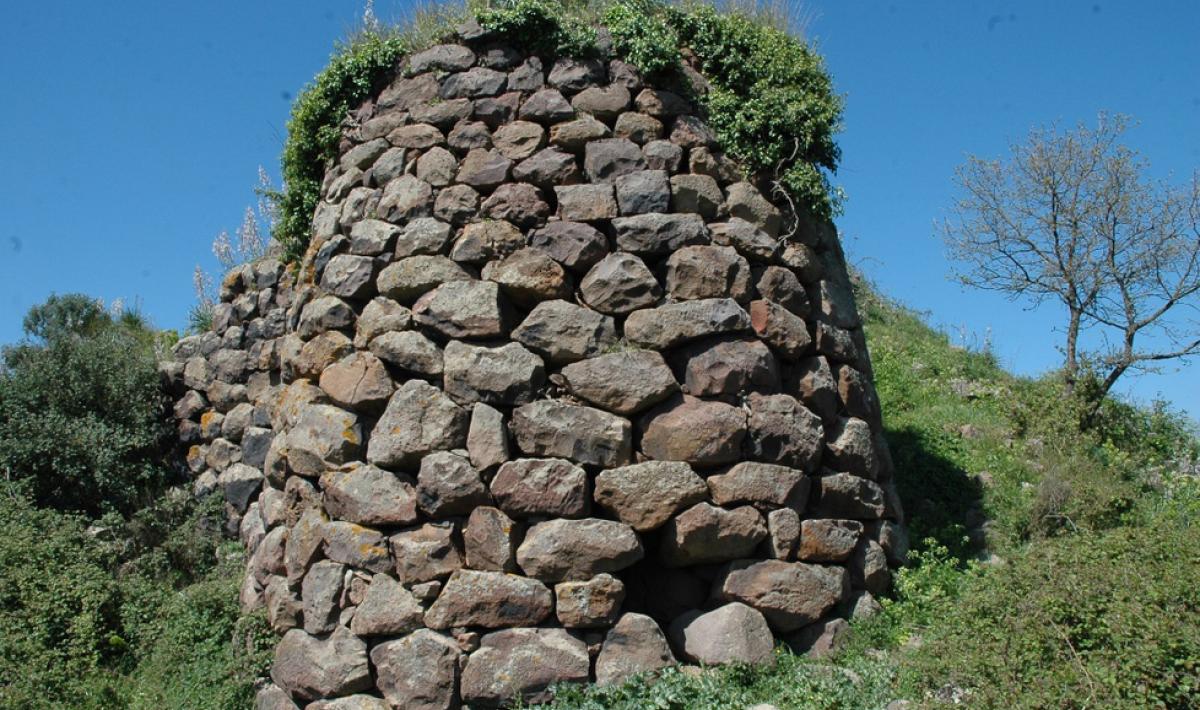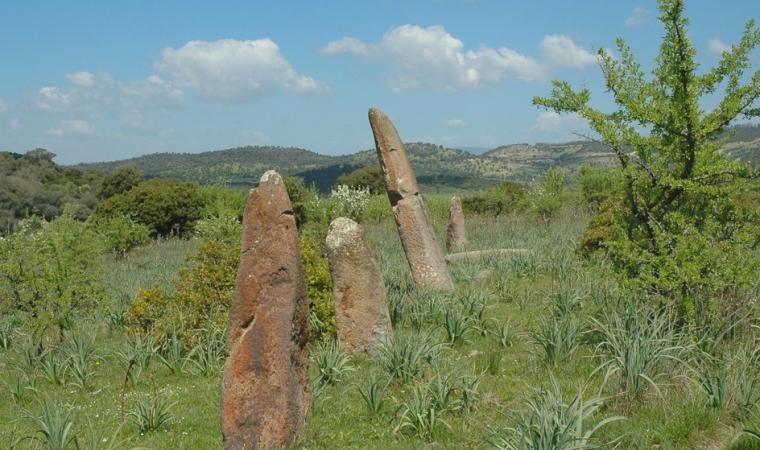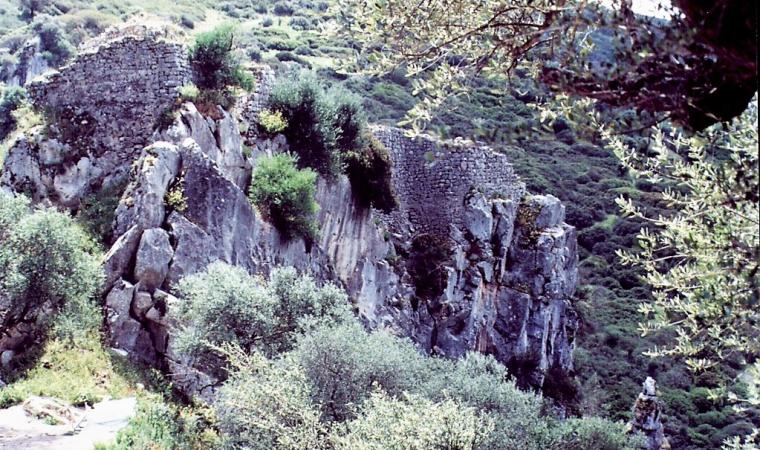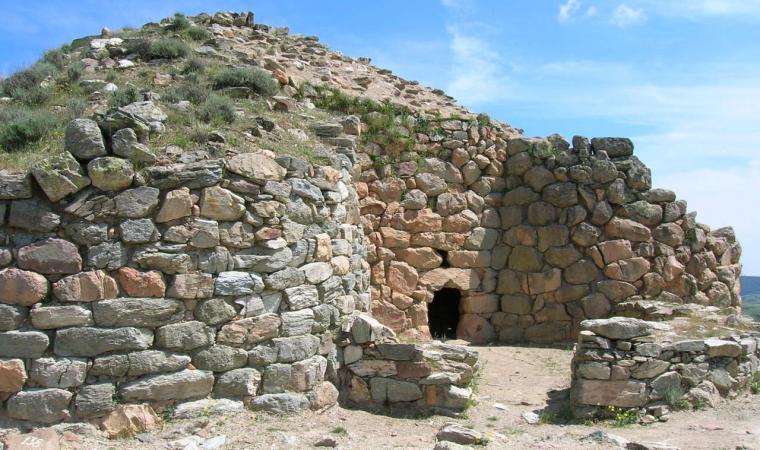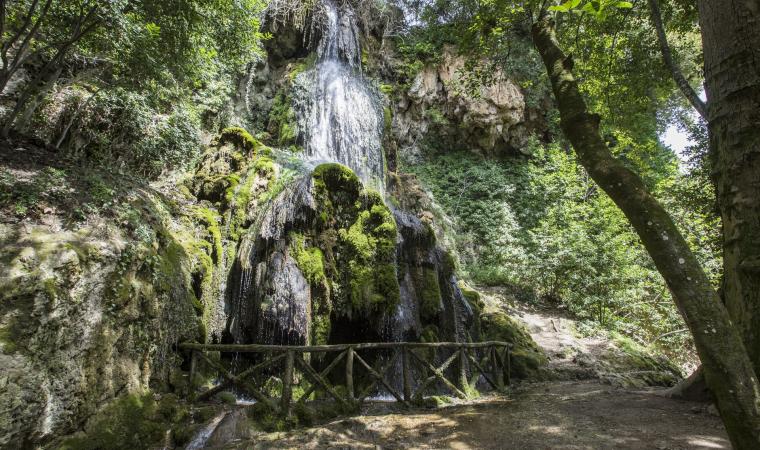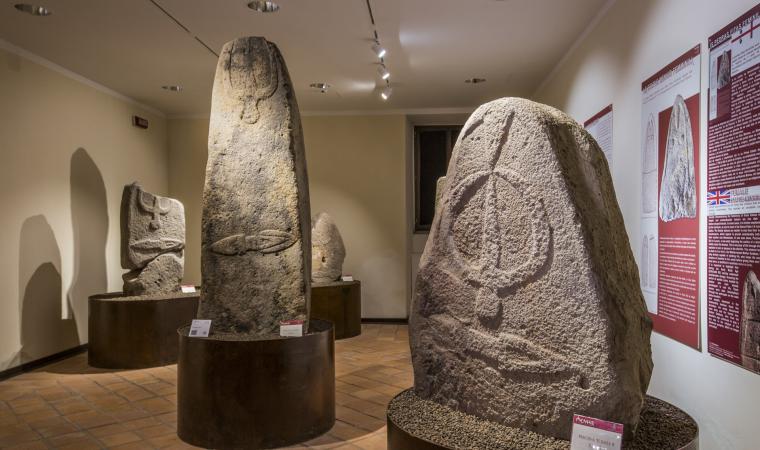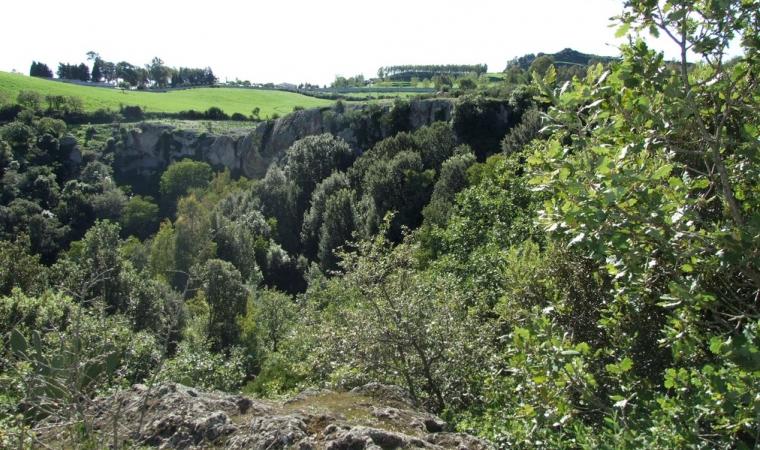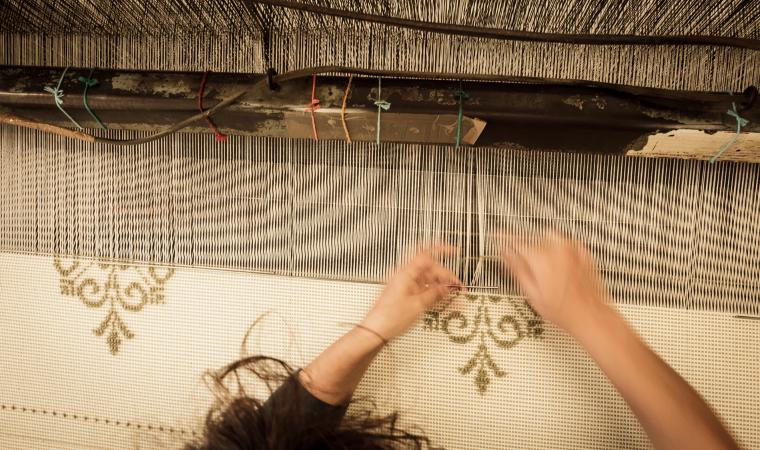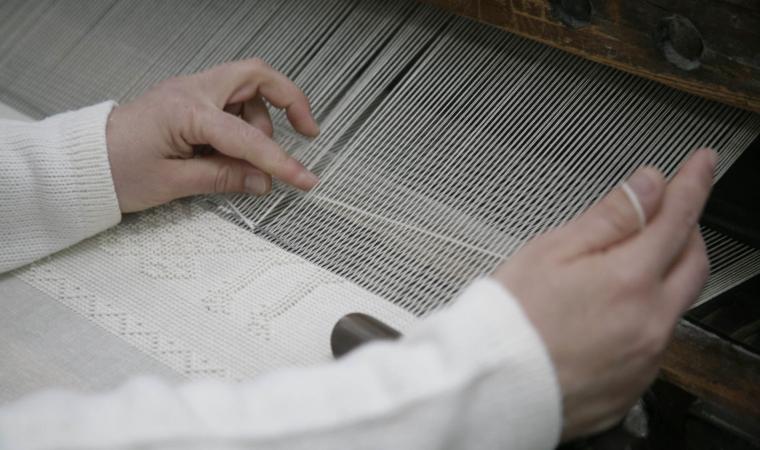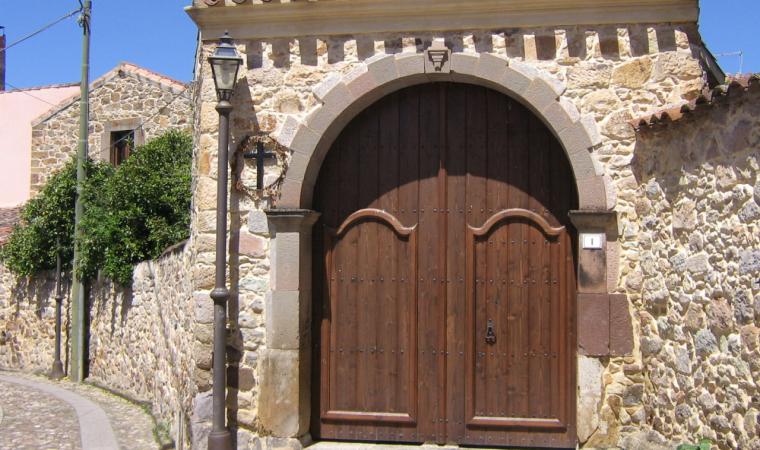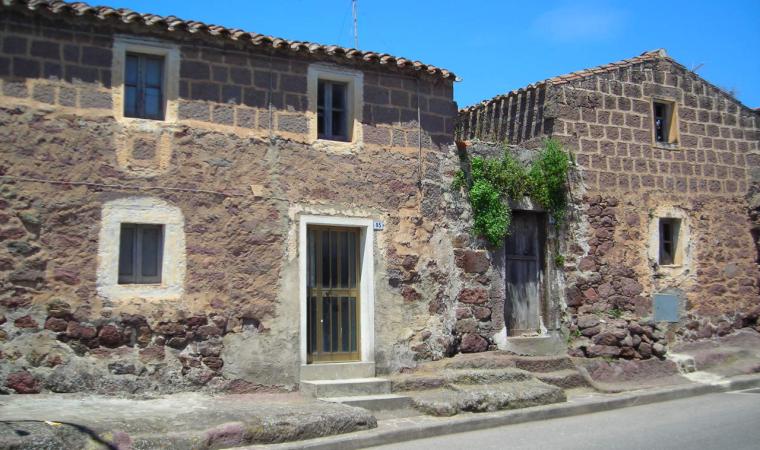The area in which it stands has unearthed some of the most important prehistoric finds on the Island, while its distinctive nature has not yet been fully clarified: the stones inside it have a blue colour. The nuraghe Genna Corte stands on a hill in the locality of Stunnu, ten kilometres north of Laconi. It is a complex structure, made up of a central tower (keep) and five secondary towers, connected by curtain walls running in a straight line, with a maximum residual height of seven metres. The construction material is trachyte, obtained from medium-sized blocks positioned in horizontal rows. About twelve metres of the height of the keep have been preserved and its diameter is slightly greater than this. The main room is full of stones caused by collapses, but it is still possible to ‘read’ the line of the walls in the corridor on the second floor.
Of the five towers, the one facing east is in good condition, as is part of the one facing south-west. In the east tower you will see a circular room, with a tholos roof still intact, from which a corridor with a pointed arch section leads into the courtyard. In one wall you will notice a niche, slightly raised with respect to the floor. In the room, you will see the phenomenon that characterises Genna Corte, the blue colouration in some points of the walls. It is assumed that this unusual chromatism is a result of the presence of lichens on the internal surface of the blocks.
About a kilometre and a half further south, you can take a leap back in time to the Neolithic period, exploring the site where the seven menhirs of Corte Noa stand - all still in situ except one. They have a ‘proto-anthropomorphic’ appearance, meaning that they show just a hint of human features, engraved in bas-relief. You will see the six monoliths that are still standing, positioned in a line, with heights varying from one metre twenty to two metres twenty centimetres. A short distance away, you can also admire a dolmen, which is of the gallery grave type. This is the type of tomb that preceded the Giants’ Tombs in Sardinia. You can then delve deeper into the megalithic culture of Laconi and Sarcidano by visiting the Civic Archaeological Museum of Menhir Statues (Menhir Museum), located inside Palazzo Aymerich. Various types of menhirs are on display, including those from the territories of Allai, Samugheo and Villa Sant’Antonio.
Laconi, a village that received the Italian Touring Club’s Orange Flag award, doesn’t stand out for its archaeology alone: the Aymerich Park deserves a visit, with a captivating waterfall inside it and the ruins of a medieval castle dating back to the period of the Judicates, as well as the house-museum where Saint Ignatius was born, a frequent destination for pilgrimages, especially at the end of August during the festival dedicated to him.

